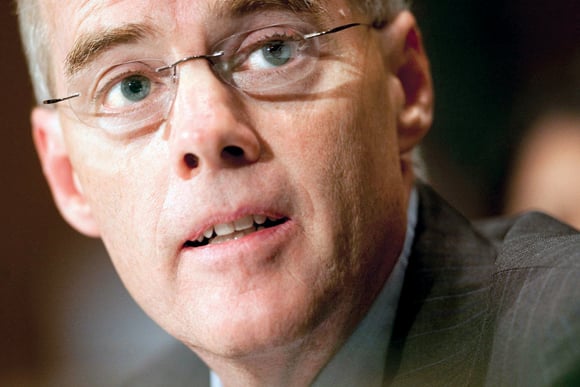Delaying until 2011 might save money, consternation; blueprint for transition not exactly 'etched in stone'
State securities regulators and a Securities and Exchange Commission official said yesterday that the groups are coordinating to ensure a smooth migration of thousands of investment advisers to state supervision. The timing of that transition may raise some questions for those advisers, however.
John Walsh, associate director and chief counsel of the SEC Office of Compliance Inspection and Examination, said that the agency has established a working group that is in frequent communication with the “switch team” at the North American Securities Administrators Association Inc.
The SEC and NASAA are sorting out the details of the transfer of investment advisers with between $25 million and $100 million in assets under management — and who operate in fewer than 15 states — to state regulation. The transition, which is expected to affect about 4,000 advisers, must be completed by July 21, 2011. Before the end of the year, the SEC will promulgate a rule that guides the switch. One of the agency's goals is to make it possible for advisers that fall in the $25-million-to-$100-million range — and are first-time registrants — to register directly at the state level.
In the meantime, investment advisers should think through whether it makes sense for them to transition right now or wait for a couple months, according to Melanie Senter Lubin, Maryland securities commissioner.
One factor to take into consideration is the change in the ADV-2 disclosure form. The SEC approved a rule over the summer that makes the document, which explains an adviser's business to clients, more narrative. The ADV-2 will become effective on Oct. 12 and mandatory in January.
Ms. Lubin counsels advisers to use the ADV-2 now but to consider whether they can save money on fees by waiting until January to register with the state. Another reason for holding off until 2011 to change their registration from the federal level is to give the SEC time to issue the switch rules.
“It's a little early to say exactly what you should do,” Ms. Lubin said. “I don't think anything is etched in stone.”
Nevertheless, Mr. Walsh said the SEC and NASAA are hammering out transition details in “in a spirit of real collaboration.” Indeed, the incoming NASAA president said that he hopes the relationship can be replicated as the massive Dodd-Frank bill is implemented. “That kind of cooperation can serve as a blueprint for the future,” said David Massey, deputy securities administrator in North Carolina. Mr. Massey will assume the NASAA presidency on Tuesday.
It's expected that the two regulatory bodies will come to an agreement about registration of private funds, a topic that has caused a fair amount of confusion. The Dodd-Frank law says that any adviser with more than $100 million in AUM falls under SEC jurisdiction. But hedge and private-equity funds only have to register if they have more than $150 million in assets. Those in between may have to supply information to the SEC but, as far as the bill reads, don't have to register with the agency.
“This is the oddest loophole I've ever seen,” said Kristina Staples, vice president and chief compliance officer at JER Partners.
Mr. Walsh said the anomaly, like many other Dodd-Frank loose ends, will be addressed through regulations.
“Stay tuned,” Mr. Walsh said. “There is going to be a very important rulemaking.”







